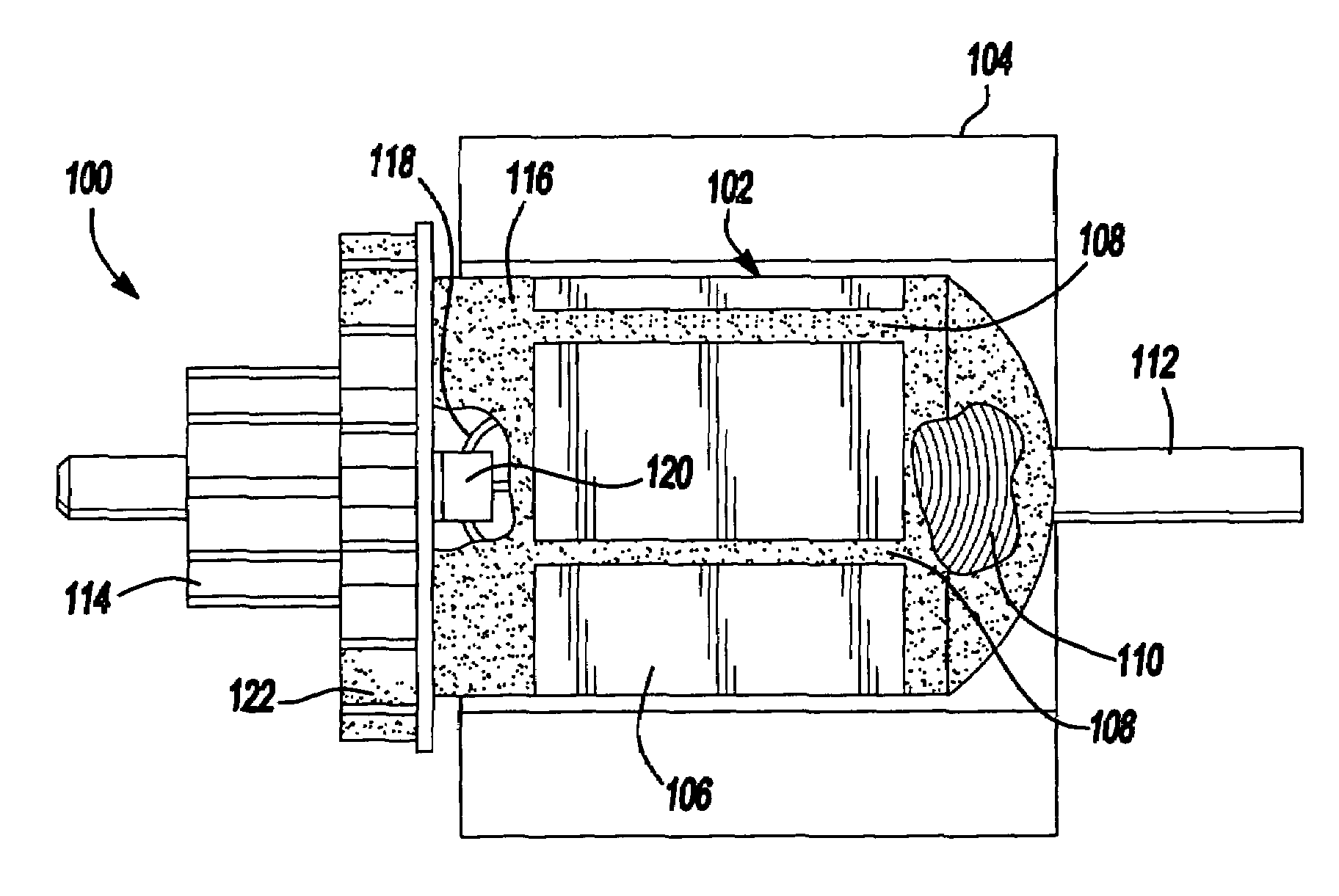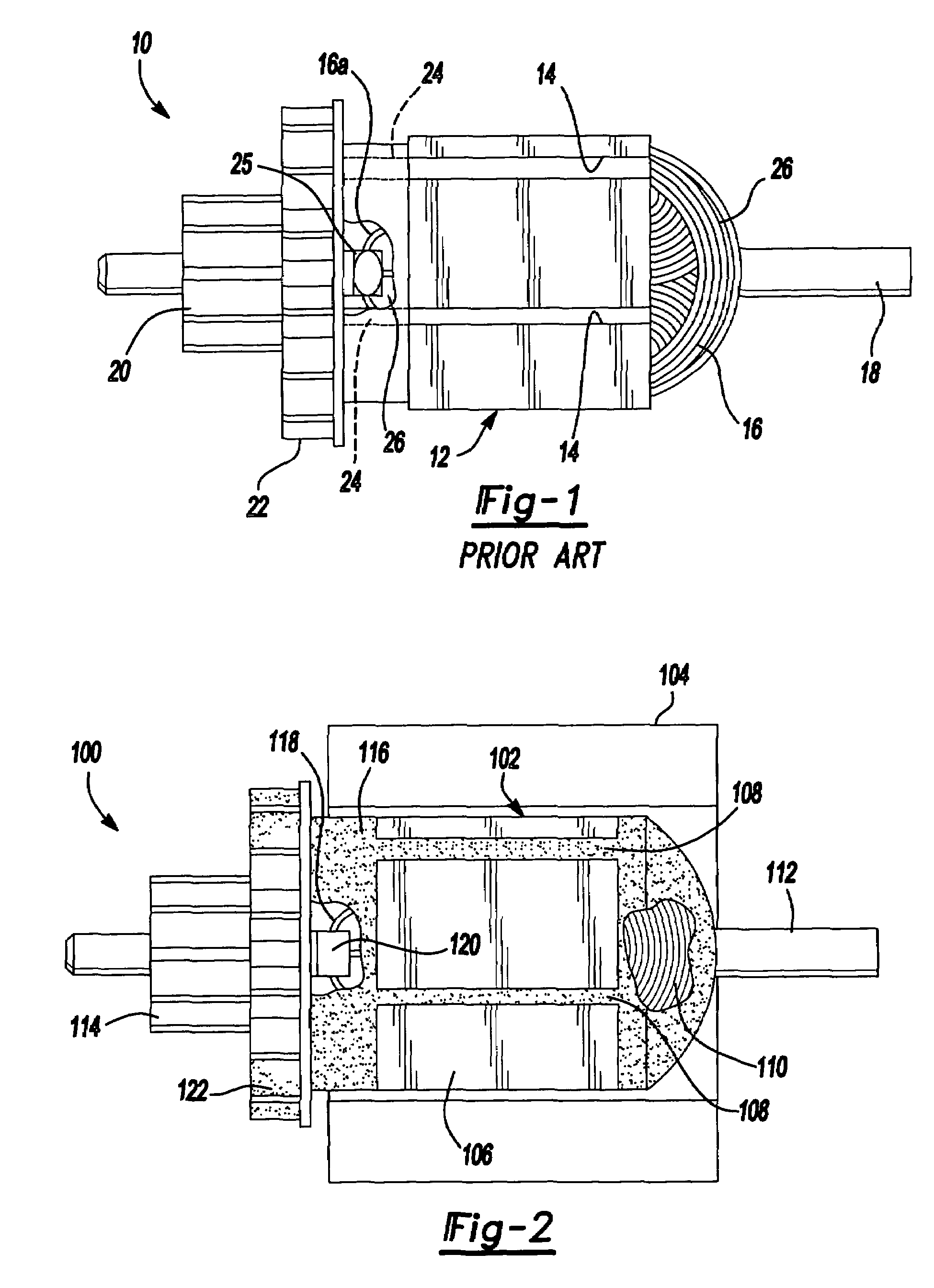Method for forming an armature for an electric motor for a portable power tool
a portable power tool and electric motor technology, applied in the field of electric motors, can solve the problems of difficult to achieve consistent application process, large oven cost, difficult to perform reliable, consistent application process, etc., and achieve the effect of eliminating the difficulty in managing the application of trickle resin, reducing the cost of operation, and improving the resistance to extreme temperatures
- Summary
- Abstract
- Description
- Claims
- Application Information
AI Technical Summary
Benefits of technology
Problems solved by technology
Method used
Image
Examples
Embodiment Construction
[0018]Referring to FIG. 1, there is illustrated a prior art armature 10 made in accordance with a conventional manufacturing process incorporating the trickle resin application steps described hereinbefore. The armature 10 incorporates a lamination stack 12 having a plurality of longitudinal slots 14 disposed circumferentially therearound. Wound within the slots 14 is a large plurality of magnet wires 16 forming coils. An armature shaft 18 extends coaxially through the lamination stack 12 and includes a commutator 20. An independently formed plastic fan 22 is secured, typically by adhesives, to the lamination stack 14. The fan 22 typically includes a plurality of legs 24 which project into the slots 14, thus taking up space which would more preferably be occupied by the magnet wires 16. Trickle resin 26 is applied over the magnet wires 16, in the slots 14, and also at the tangs 25 where the ends of the magnet wires 16a attach to the commutator 20.
[0019]Referring now to FIG. 2, a mot...
PUM
| Property | Measurement | Unit |
|---|---|---|
| Density | aaaaa | aaaaa |
| Moldable | aaaaa | aaaaa |
| Electrical conductor | aaaaa | aaaaa |
Abstract
Description
Claims
Application Information
 Login to View More
Login to View More - R&D
- Intellectual Property
- Life Sciences
- Materials
- Tech Scout
- Unparalleled Data Quality
- Higher Quality Content
- 60% Fewer Hallucinations
Browse by: Latest US Patents, China's latest patents, Technical Efficacy Thesaurus, Application Domain, Technology Topic, Popular Technical Reports.
© 2025 PatSnap. All rights reserved.Legal|Privacy policy|Modern Slavery Act Transparency Statement|Sitemap|About US| Contact US: help@patsnap.com


